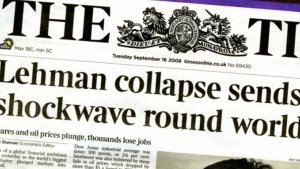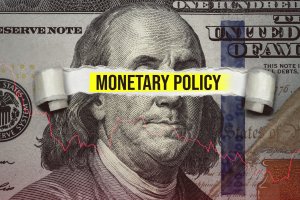The last three major economic downturns in the global economy (1990, 2001 and 2008) did not have their roots in rising inflation and a determined central bank response. Rather, they had their origins in rising debt levels and associated disturbances in financial markets. Taming the “boom-bust” credit cycle should by now have displaced inflation and the business cycle as the chief concern of central bankers. Unfortunately, this crucial lesson has not been learned. Rather, excessive reliance has been placed since 2008 on tightened regulation of the financial sector, in large part following internationally agreed guidelines. These regulations, mostly affecting banks, have already “fallen short” of preventing a further, dangerous increase in global debt ratios and other threats to economic and financial stability. Indeed, it can be argued that they must “fall short” for a variety of reasons explained in my new INET Working Paper.
First, the primary objective sought by the regulations has been to ensure that a weak financial system does not aggravate economic downturns, by restricting the supply of credit. Arguably more important, and having received some but much less attention, is the need to ensure that an overly exuberant financial system does not weaken other parts of the economy, by encouraging a rapid buildup of debt during upturns. This aggravates the subsequent downturn by limiting the demand for credit.
The only policy that would suffice to avoid both problems is to “lean against the wind” of debt accumulation in the upswing of the credit cycle. We need a macrofinancial stability framework to do this effectively. Both monetary policy and time-varying macroprudential regulatory policy must be used in a way that reflects their relative strengths and weaknesses. Without monetary support, regulatory restrictions will be circumvented. Without the support of cyclically- sensitive macroprudential policies, monetary tightening alone might prove destructive for the whole economy. This “belt and braces” approach is consistent with the insights provided by treating the economy as a complex adaptive system.
Second, the time-varying macroprudential policies introduced in recent years do not have the objective of leaning against the credit cycle. That objective has now been focussed much more narrowly on preserving the stability of the financial system, defined as a system capable of providing essential services even in the aftermath of a financial crisis. As with monetary policy, macroprudential policies have now become more focussed on resilience (clean up after) than sustainability (lean against the wind). This narrowed objective is unfortunate since dangerous “imbalances” can build up outside the banking system (threatening market functioning) and even outside the financial sector (in the form of excessive household and corporate debt).
Third, when time-varying macroprudential policies are directed to the stability of the financial system, they run into a whole host of implementation problems. National governance arrangements (commonly interagency committees) are generally a blueprint for inaction. The fact that most macroprudential instruments are microprudential instruments already assigned to other official bodies (but for a different purpose) is a further institutional complication. Moreover, absent agreed models on how financial crises unfold, deciding when to change regulatory instruments (and which ones) becomes highly uncertain. The need to evaluate and to trade off the joint effects on near term growth, financial stability and distributional issues makes such judgements even less reliable.
Fourth, while there have been significant improvements to financial sector regulations that do not vary with time, individual changes still have shortcomings and their coherence as a package has also been questioned.
One evident improvement in recent years has been the growing emphasis on systemic vulnerabilities, allied with the recognition that threats to the system can be growing even if all the financial agents look individually healthy. This insight has led to the introduction of non time-varying macroprudential policies. Regulatory attention has focussed on identifying Global Systematically Important Banks (GSIBs) and how they might be wound down without unacceptable side effects and with minimal costs to taxpayers. Significant attention has also been put on reducing interdependencies in the financial system that could lead to systemic distress. While important progress has been made, significant shortcomings still need to be addressed as do the problems of unintended consequences arising from the policies adopted. Significant doubts still remain as to whether a GSIB or a large central counterparty could be wound down without unacceptable collateral damage.
The reality is that most of the post crisis reform effort has gone into traditional microprudential regulatory policies. Such policies also do not vary over time and, by definition, cannot “lean against the wind”. Moreover, microprudential policies seek to strengthen the health of individual institutions, rather than the stability of the financial system as a whole. Thus, they are two steps away from the ideal of countercyclical policies directed to stabilizing the broader economic system.
Some of the post-crisis microprudential initiatives have clearly been helpful. Bank capital ratios are now much higher and the risk weighted ratios have now been complemented by an unweighted leverage ratio. Yet, a number of commentators have questioned whether the increases are adequate, especially given the many risks that have grown sharply in just the last few years; e.g., digitalisation and operational risk, losses associated with climate change, and risks arising from the increased frequency of pandemics. Moreover, certain shortcomings can also be identified. Not least, tighter regulations of institutions by sector invites migration to less regulated sectors as well as encouraging innovations specifically designed to avoid the regulations. For example, pre-crisis regulation of banks contributed to the growth of a particular form of “shadow banking”. Since the crisis, the rapid growth of asset management companies has raised questions about the risks they might now pose to the global financial system.
The seriousness of each of the concerns raised in this paper might be debated. Taken all together, however, they point to the conclusion that post crisis international financial regulation still “falls short”. The stability of the financial sector, much less the economy more generally, is still far from assured. This assessment suggests a need for a fundamental rethink of how both monetary and regulatory policies should be conducted, once the problems triggered by the covid-19 pandemic have been put behind us.
In assessing alternative proposals, a preference should be given to building on existing institutional structures in an incremental way. This suggests changing the policies of government institutions, and then adding on policies to either change the behaviour of market participants or to change the structure of financial markets themselves. Consistent with the comments above, this implies that countries should adopt a macrofinancial stabilisation framework in which both monetary and regulatory polices “lean” against the credit cycle. As a corollary, all policies (monetary, regulatory and fiscal) should be used more symmetrically over each individual cycle. That would be required to stop the buildup of stocks of debt, both private and public, over time. This regime change should be complemented with measures designed to change the behaviour of financial agents; in particular, a much greater reliance on self discipline and market discipline. Finally, structural changes to roll back financial consolidation, globalisation and securitization could be contemplated if the above, “market friendly” reforms failed to achieve their purpose.
Many critics of the current system suggest the need for much more radical reform. Those advocating “free banking” feel that financial regulation and the provision of official “safety net” support should be severely limited. Financial stability would be ensured by market discipline, with banks making imprudent loans being reined in by other banks fearing the systemic fallout. Others advocate “narrow banking”, some variant of the original proposal made by the Chicago School in the 1930s. In the original version, banks would have to hold government securities as backing for all current accounts. They would therefore lose their capacity to create money, and to drive credit “booms and busts”. Instead all risky loans would be financed by true savings, and each loan would bear a direct risk of loss. More modern versions also address the so called “boundary problem”; namely, that non-banks could create substitutes for narrow money. As with “free banking”, financial regulation and safety nets would be swept away.
Barring a decision, jurisdiction by jurisdiction, to retreat into autarky, all proposals for change at the national level will have to face international challenges. First, unilateral adoption of a macrofinancial stability framework could lead to undesirable changes in a country’s exchange rate. Second, regulatory changes at the national level will immediately raise concerns about international competitiveness and level playing fields. These arguments imply that any fundamental rethink of the conduct of monetary and regulatory policies should take place in international fora. Since we currently do not have an international monetary system, with agreed rules directed to preserving international economic stability, such a rethink would fill an existing and dangerous void.





